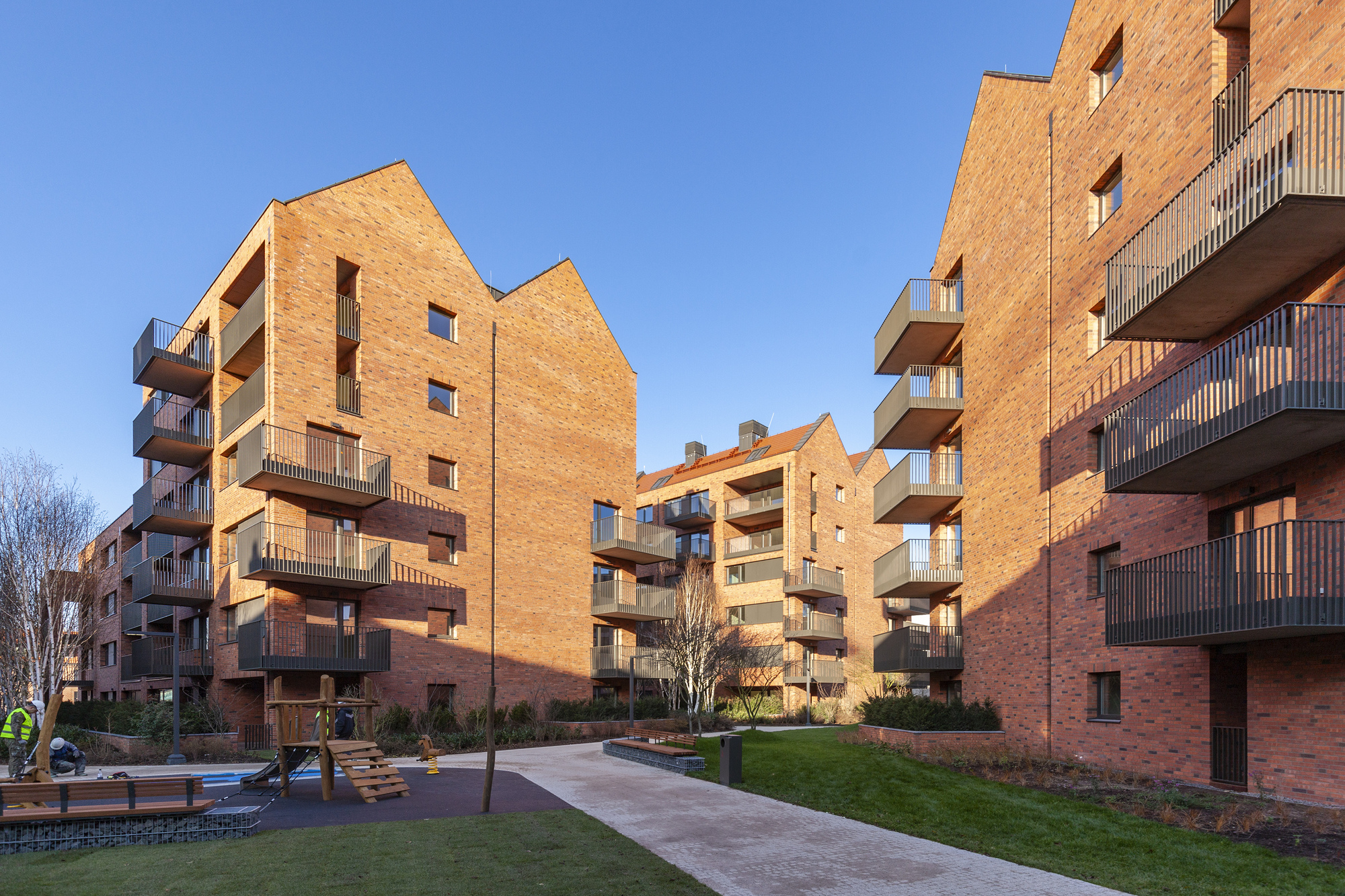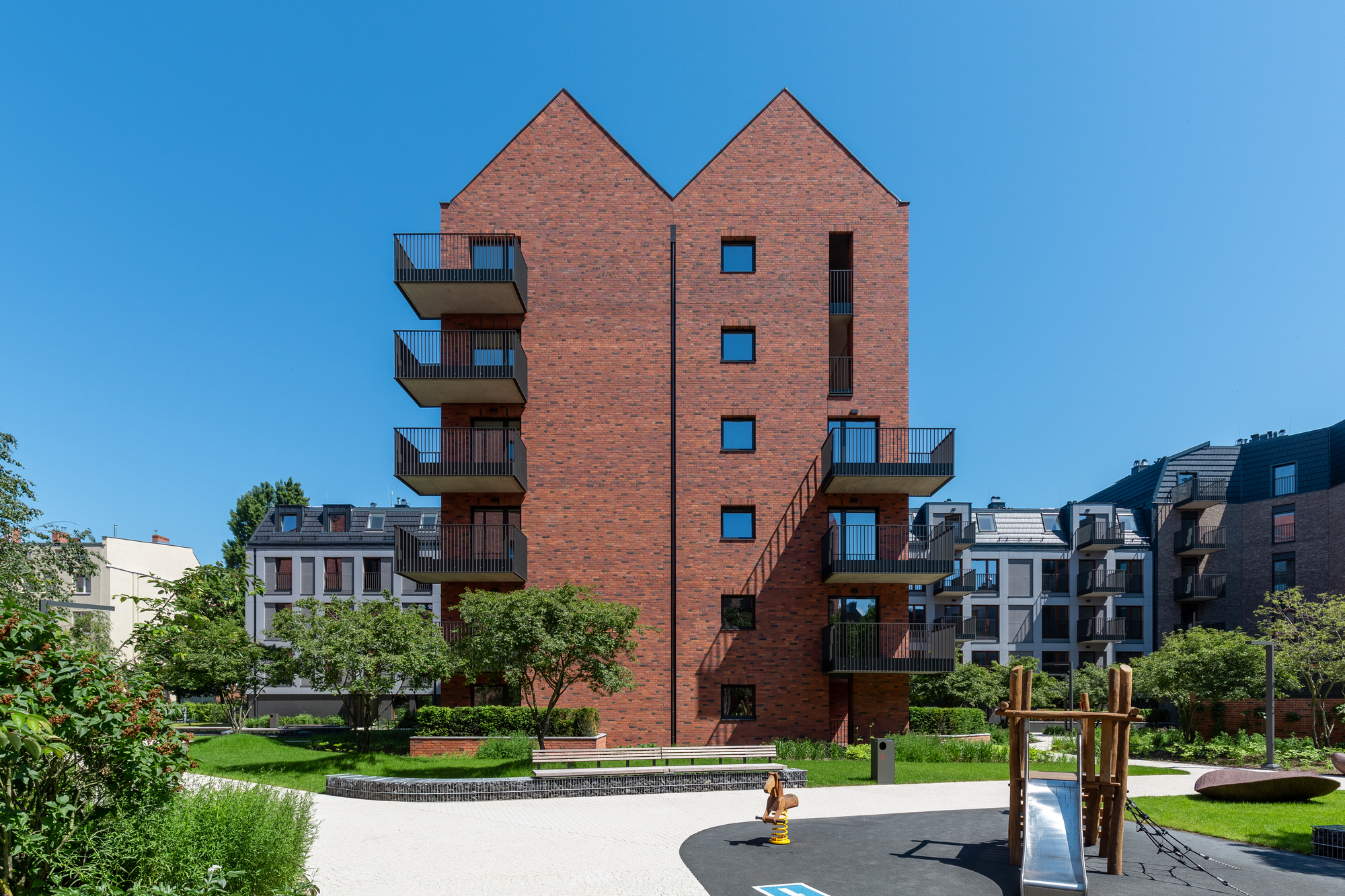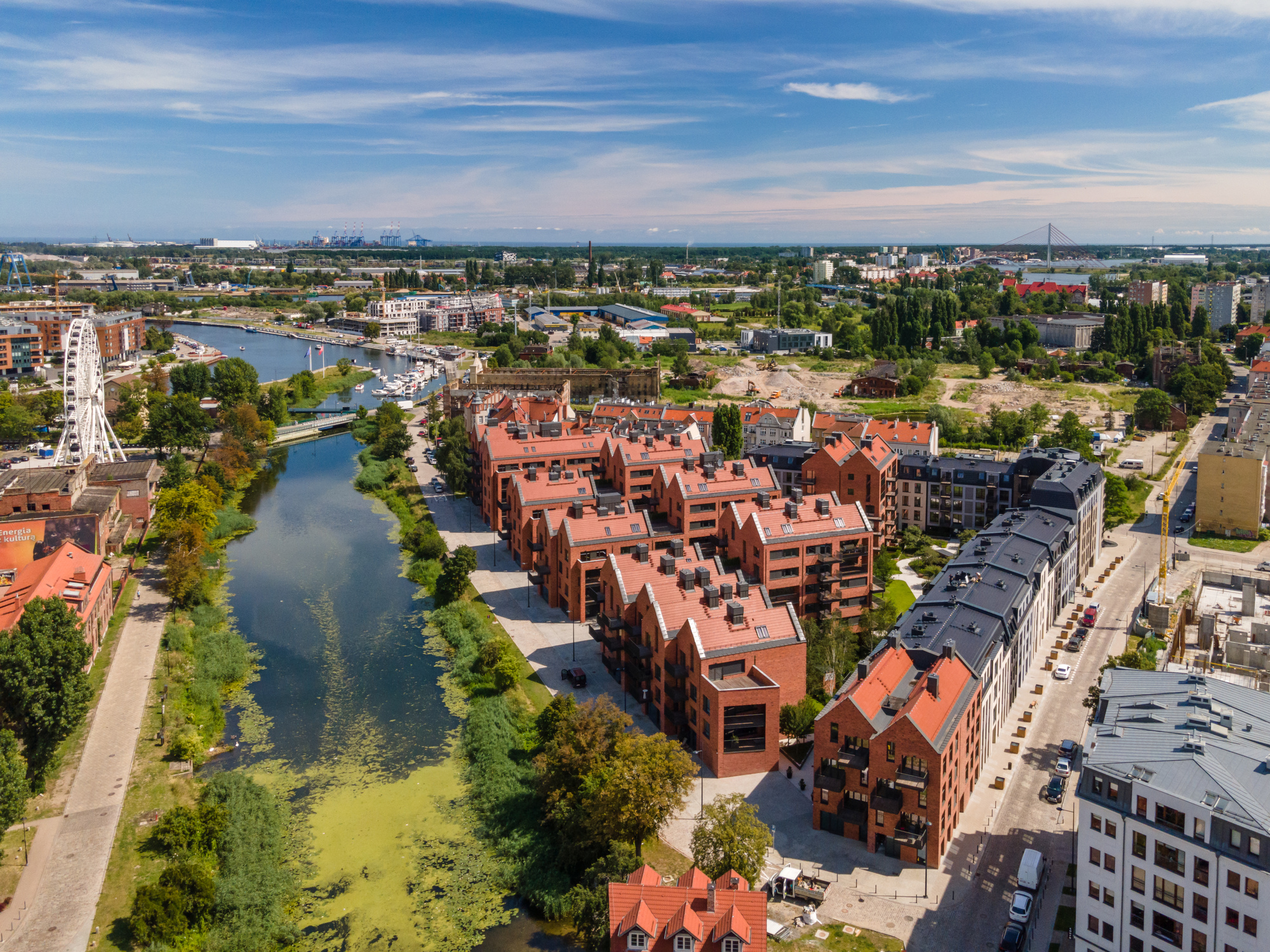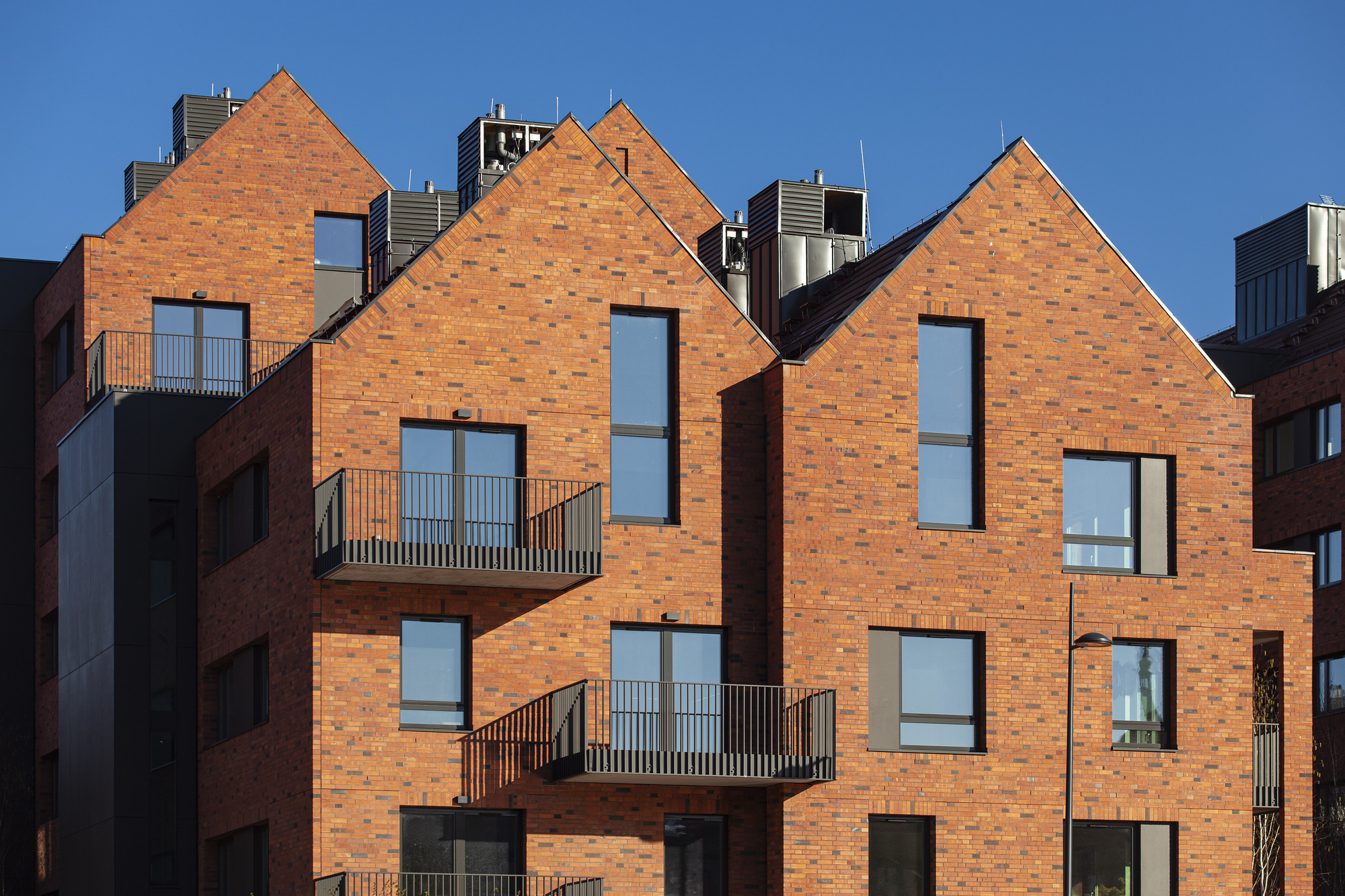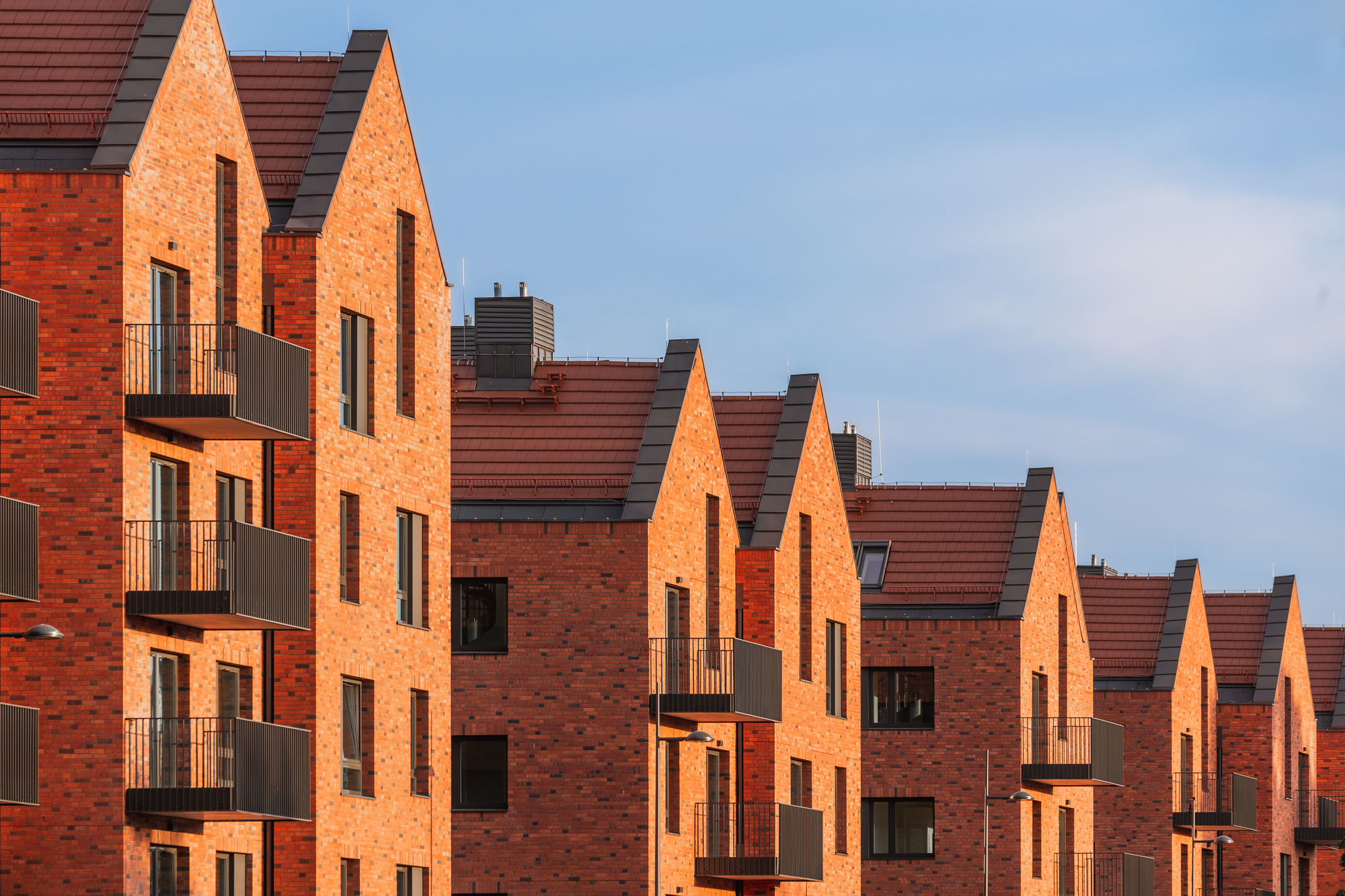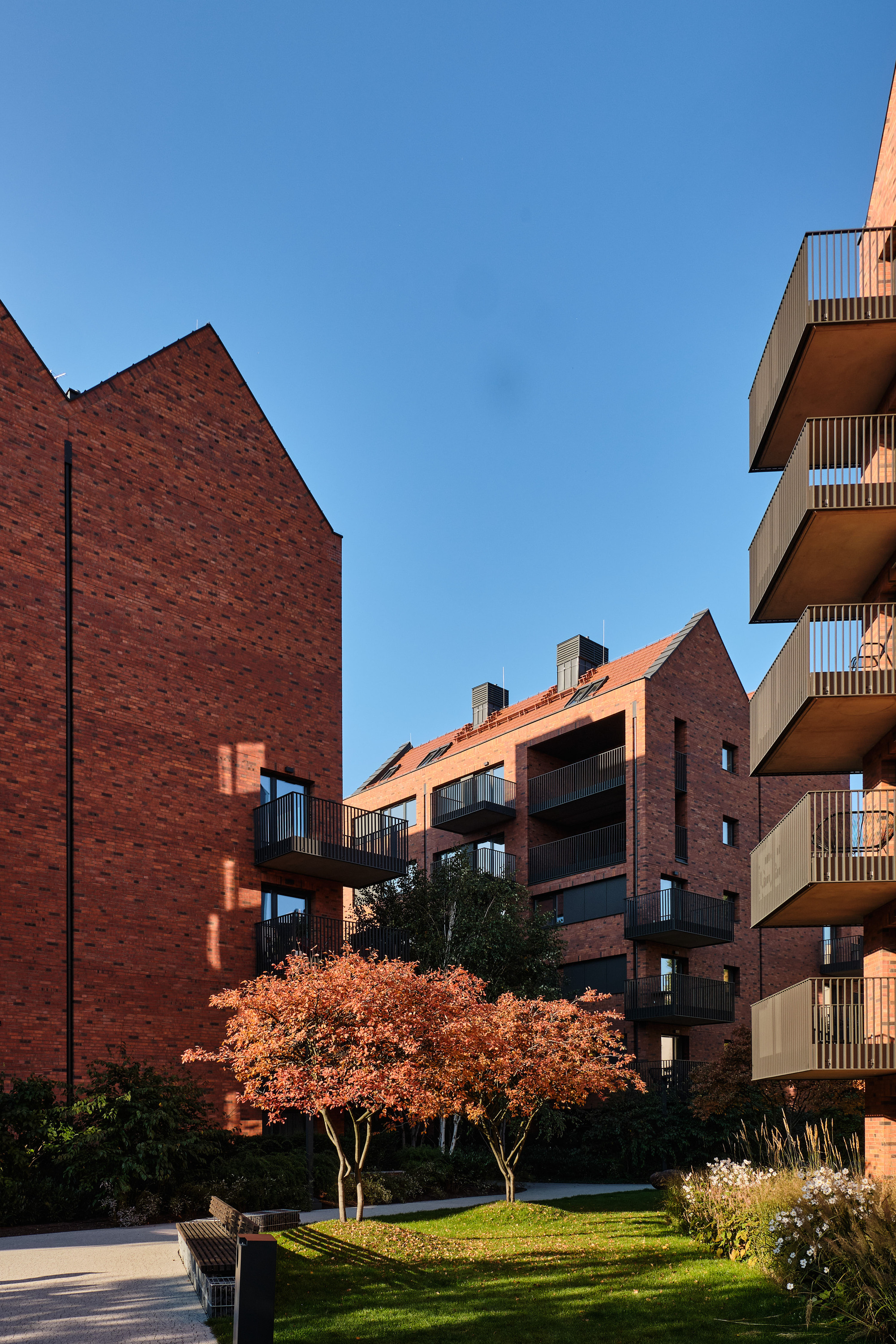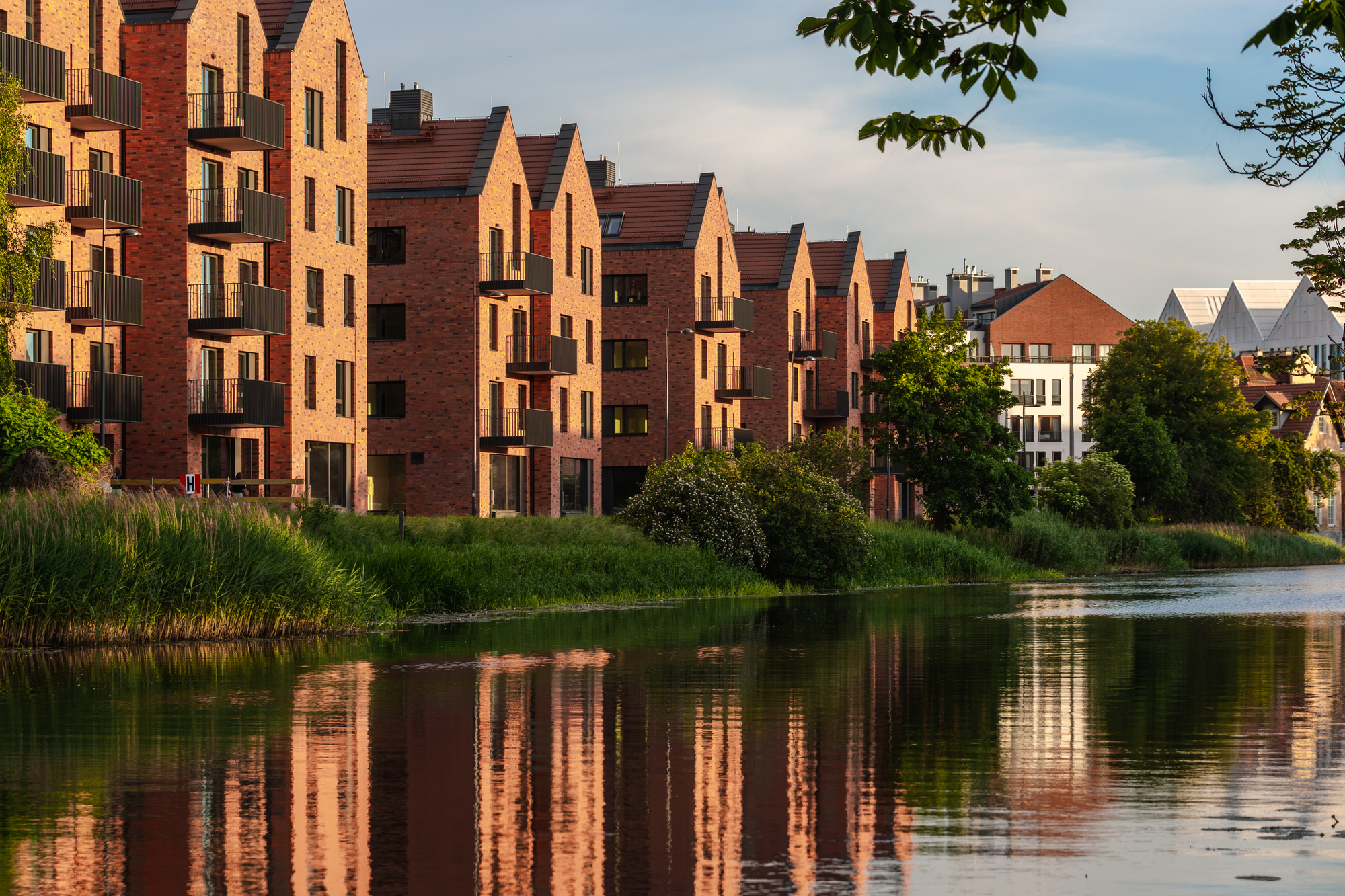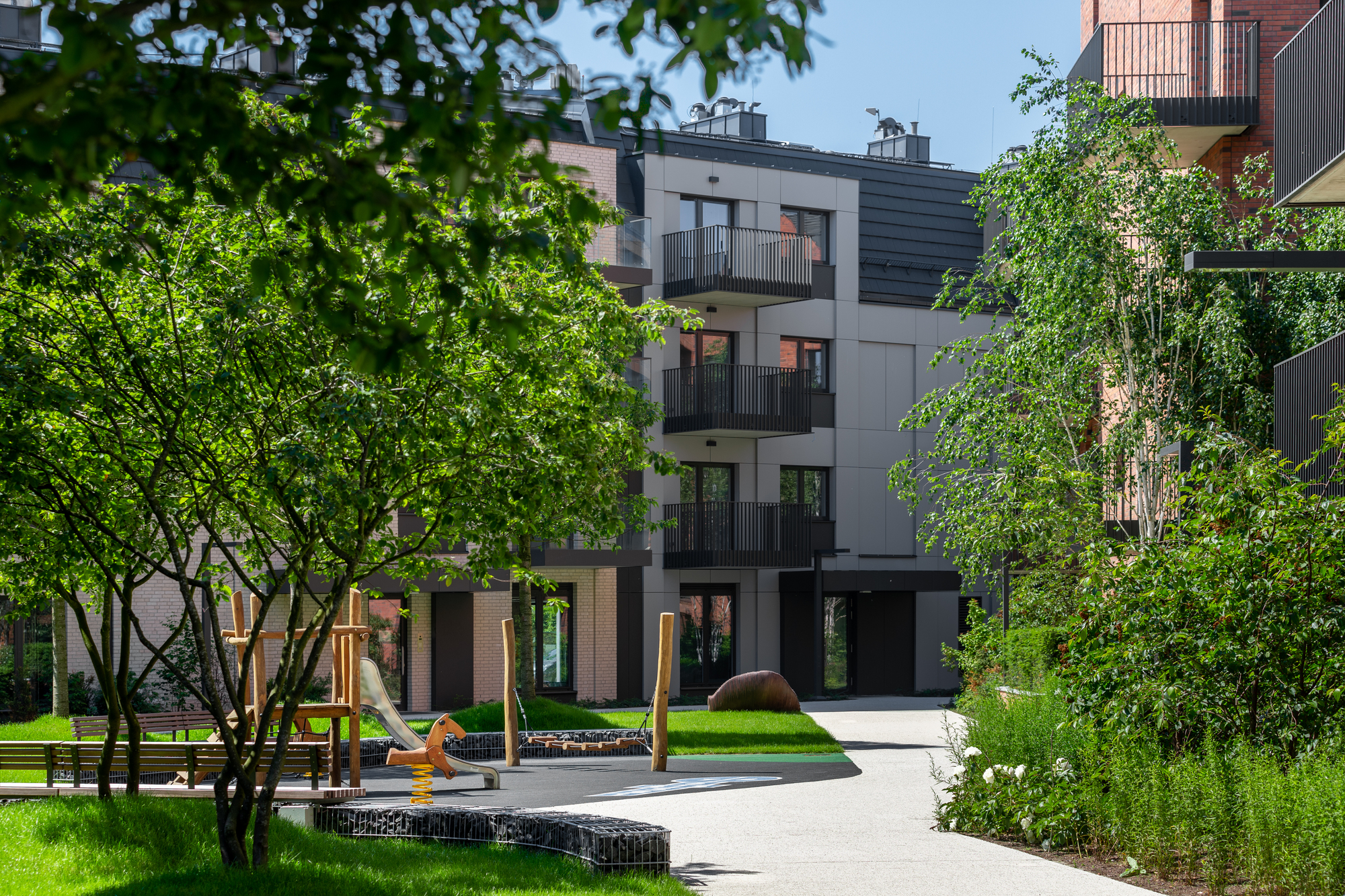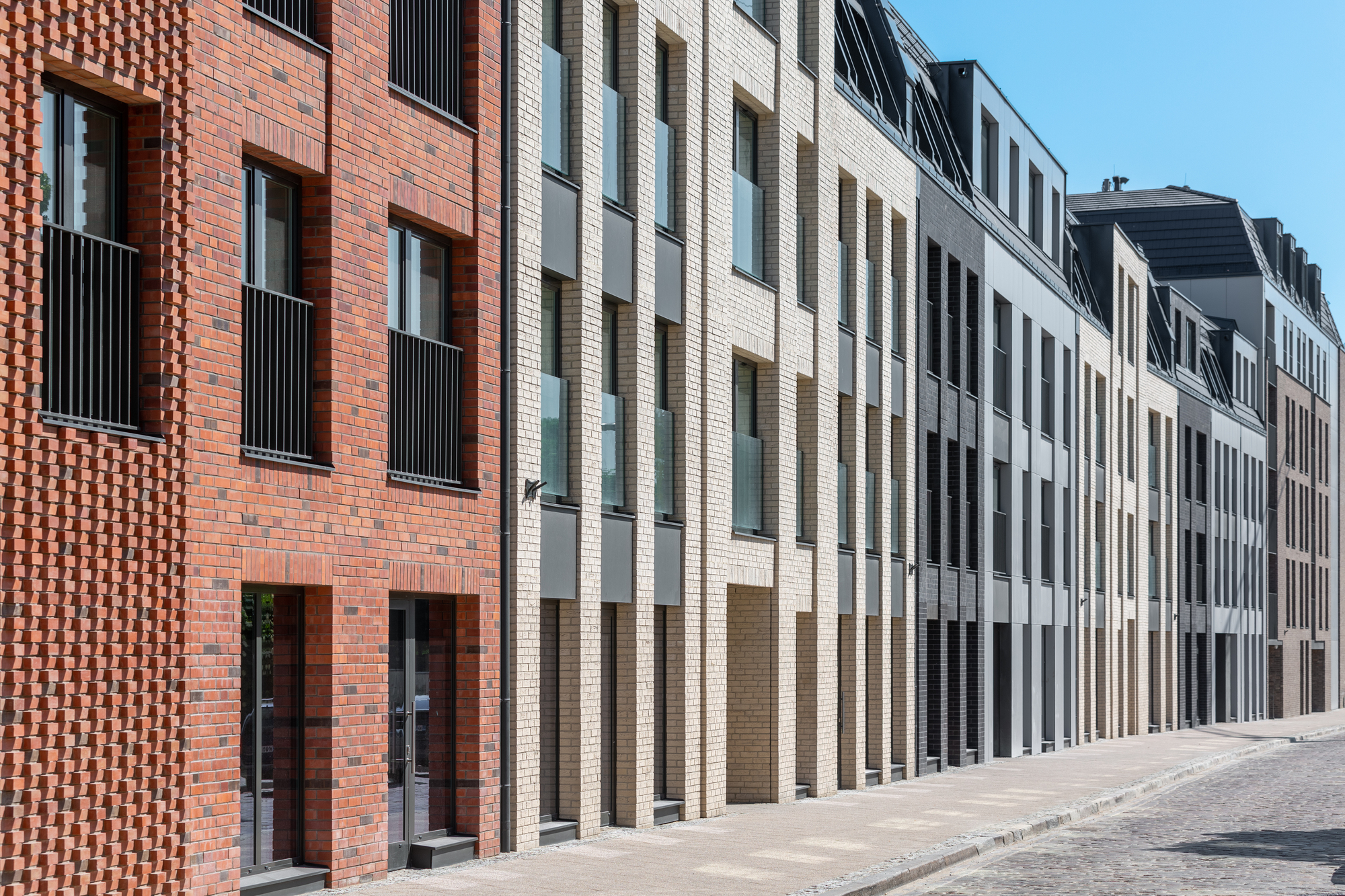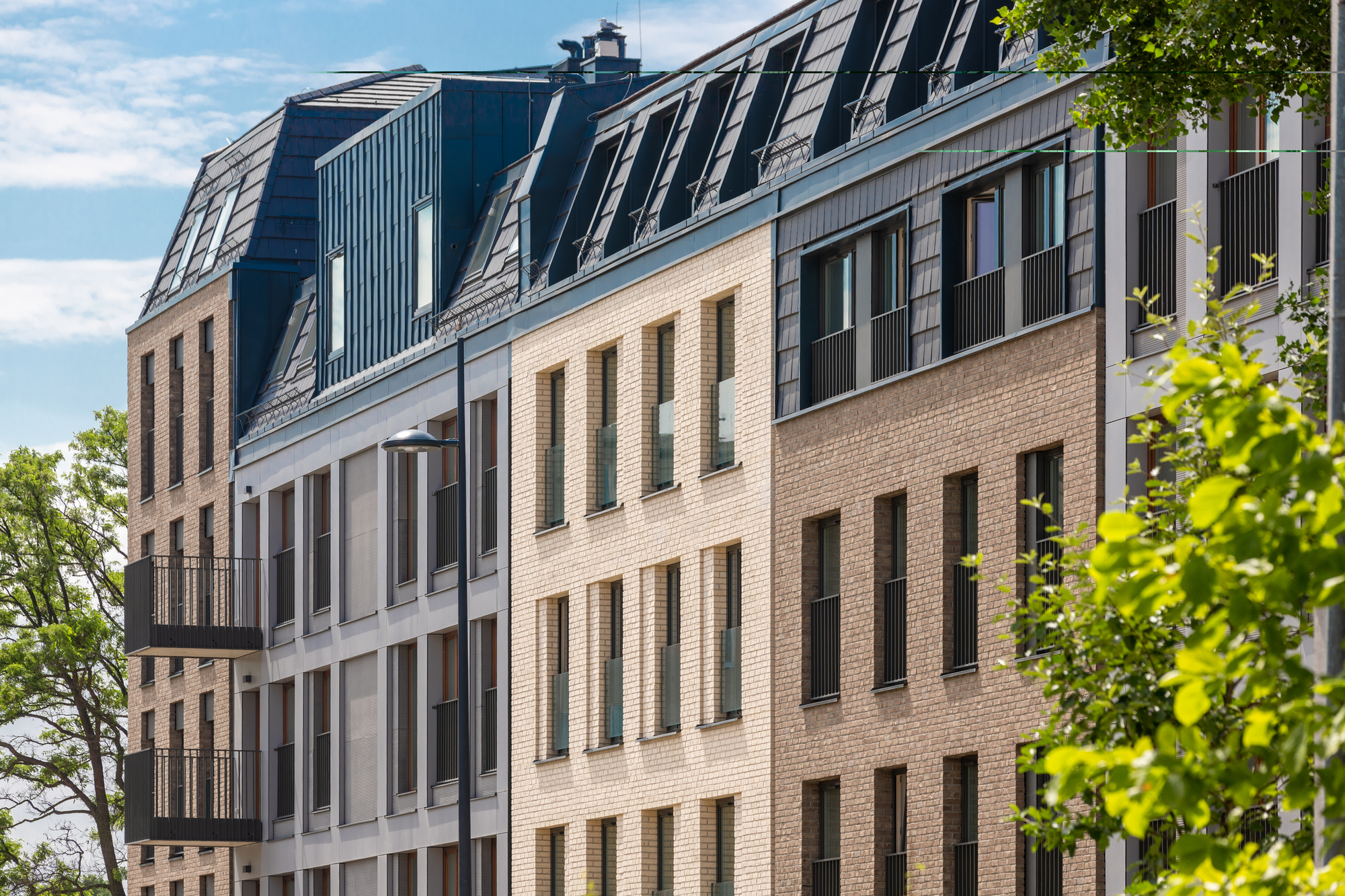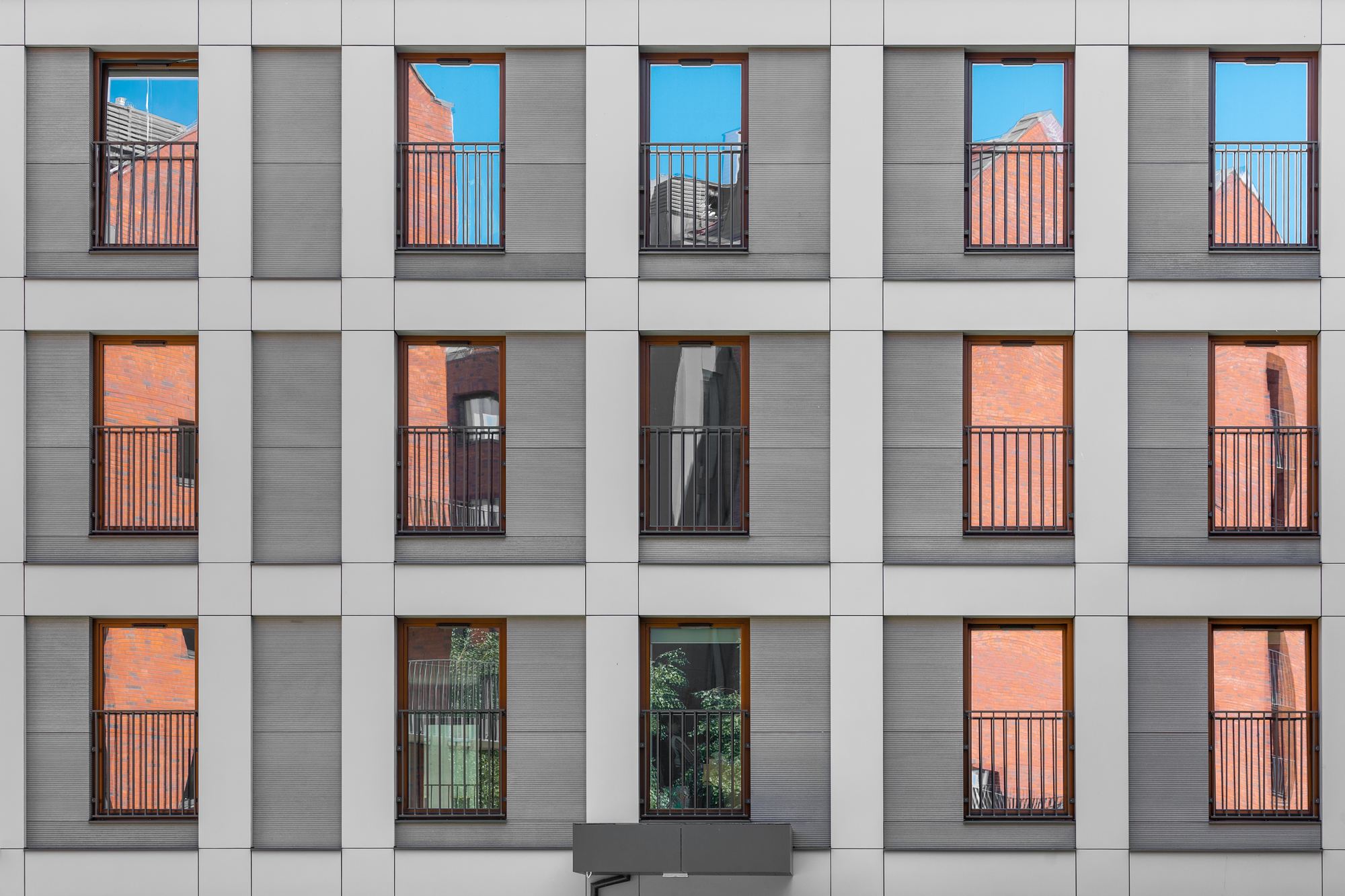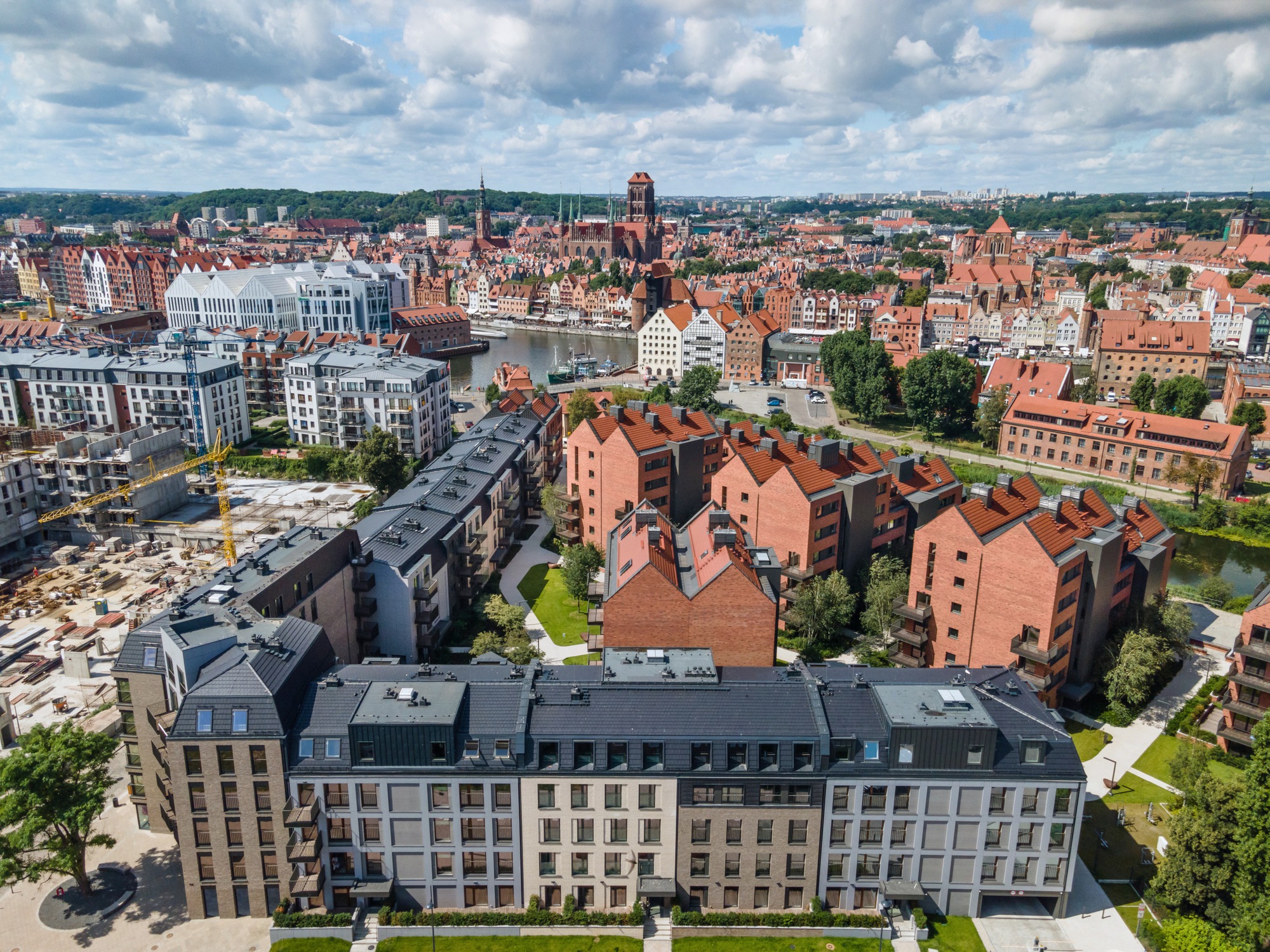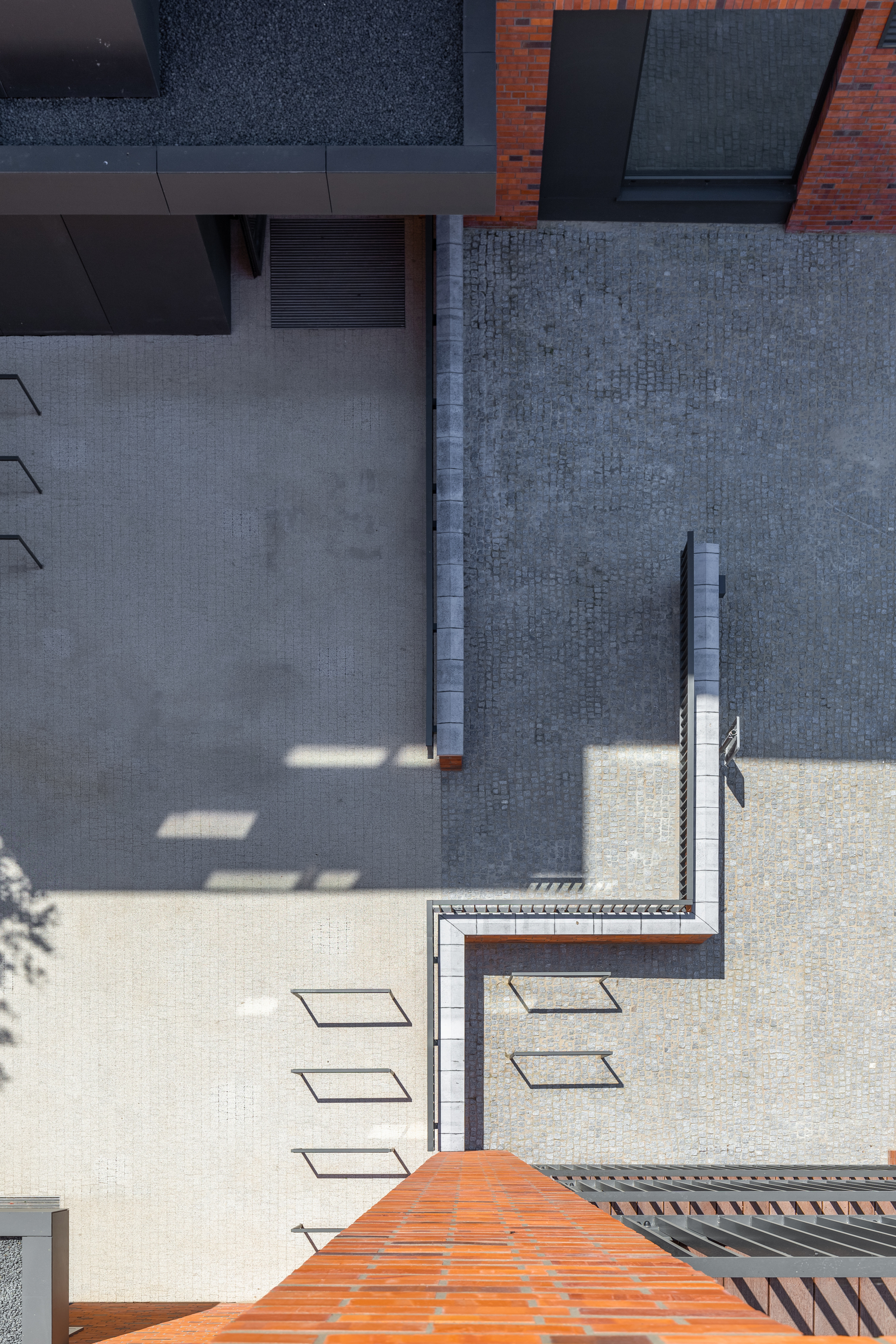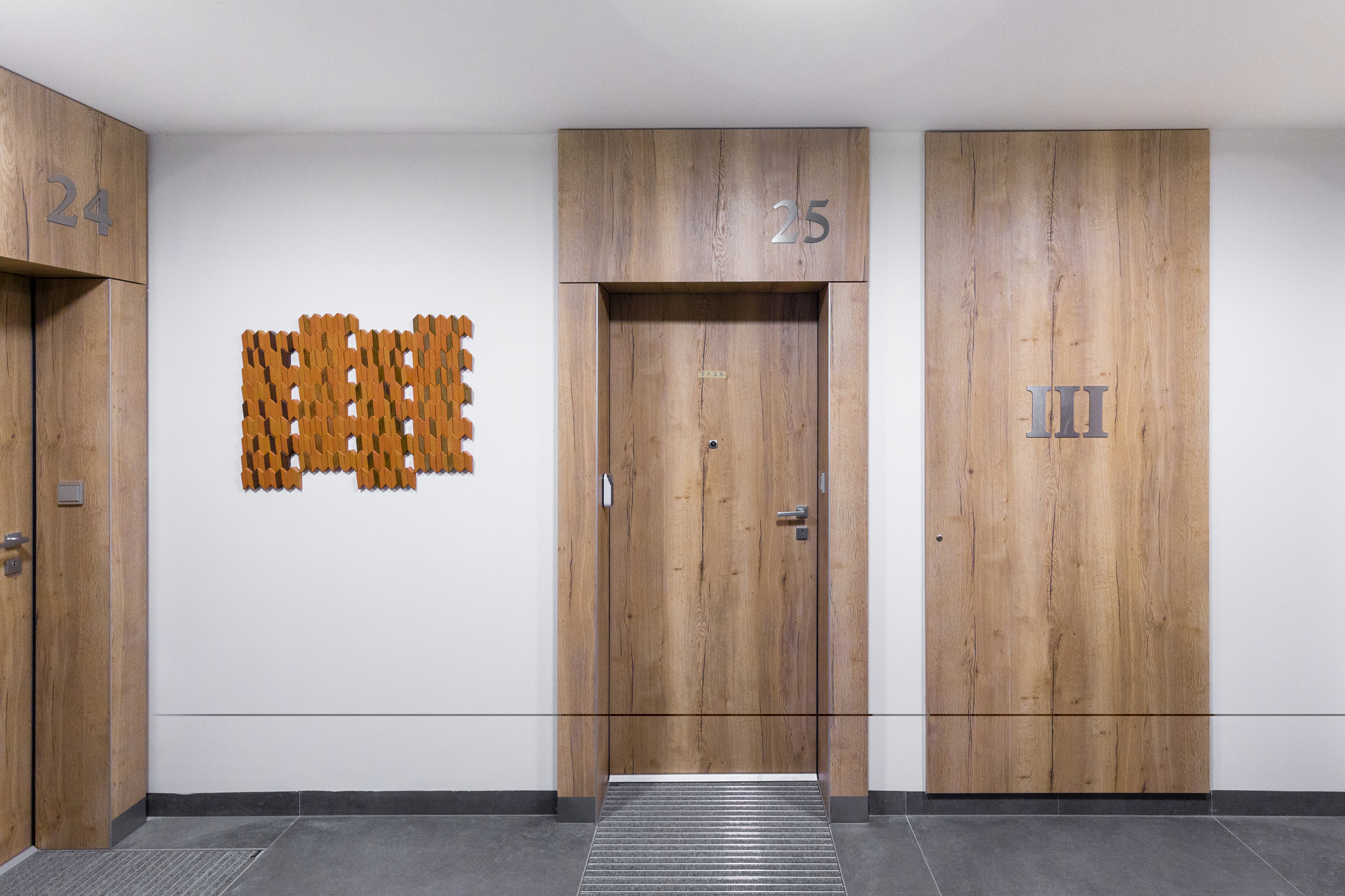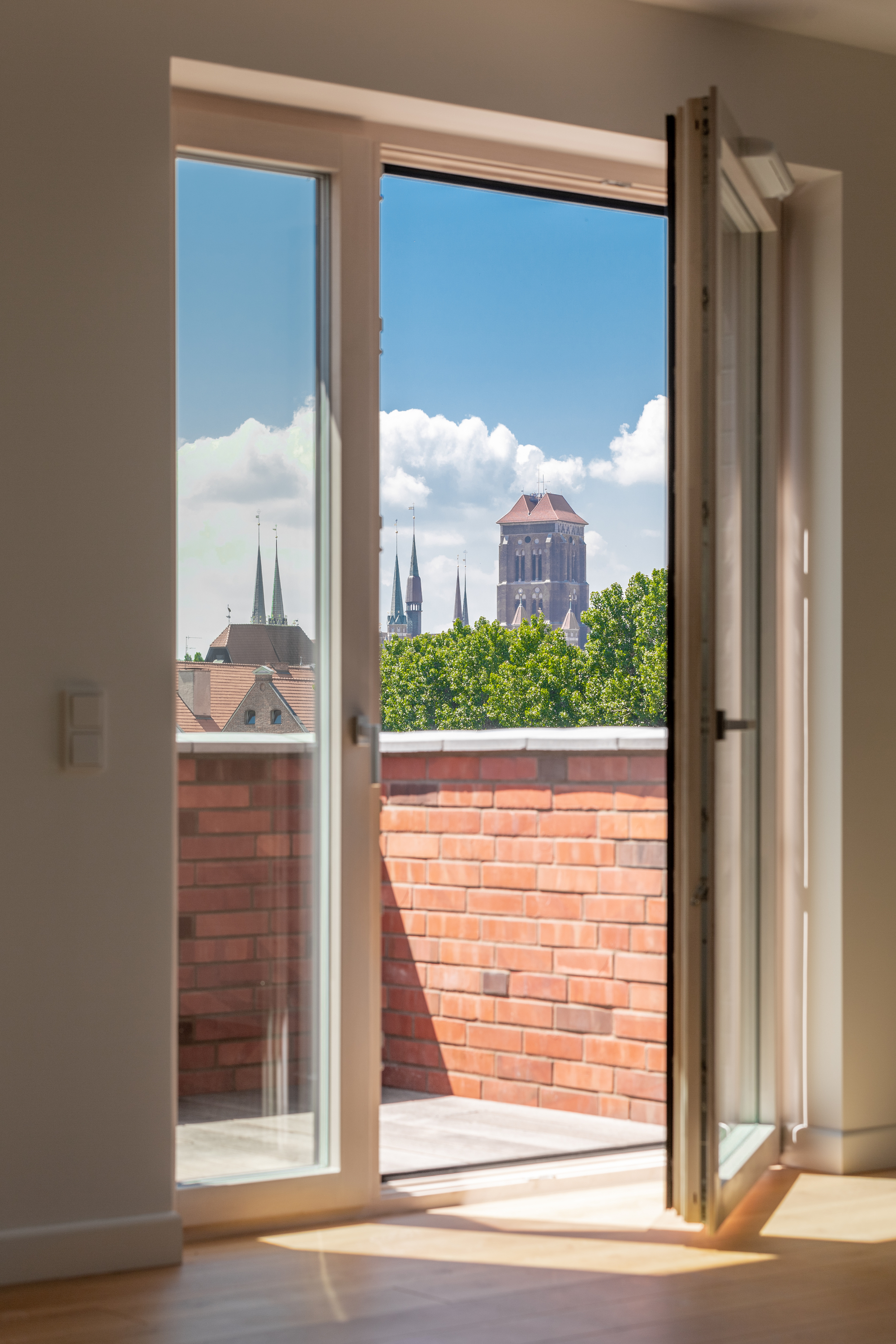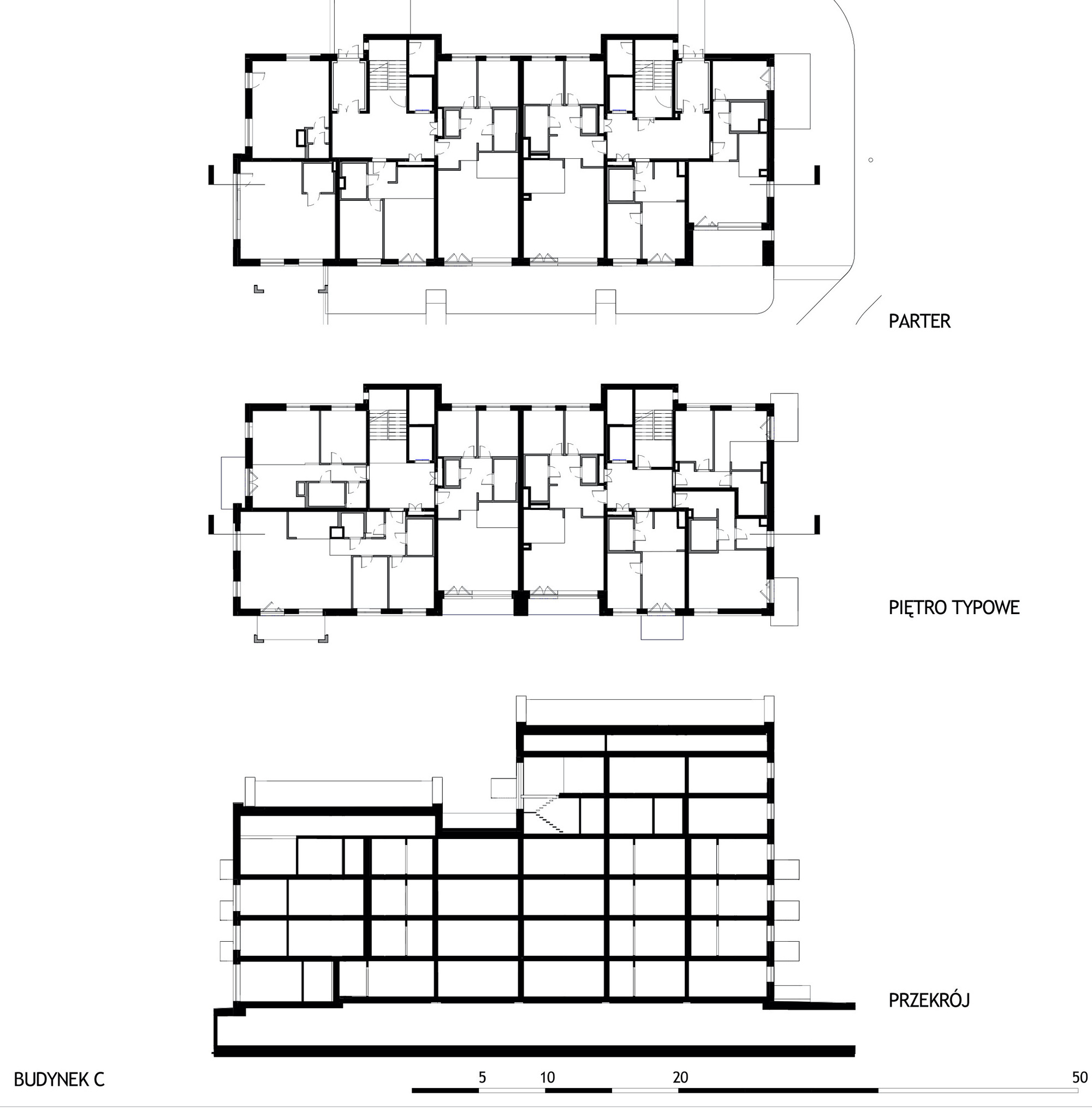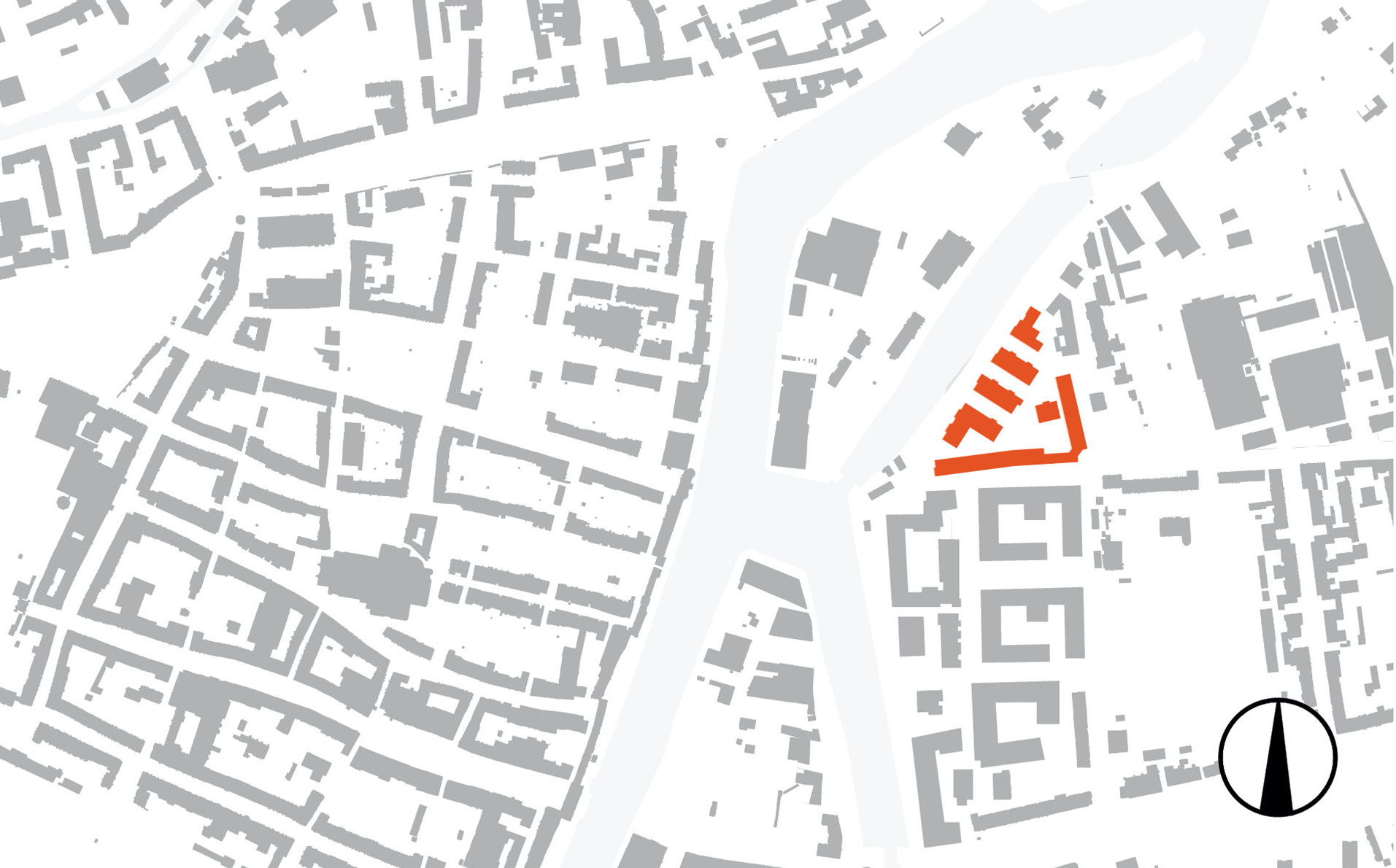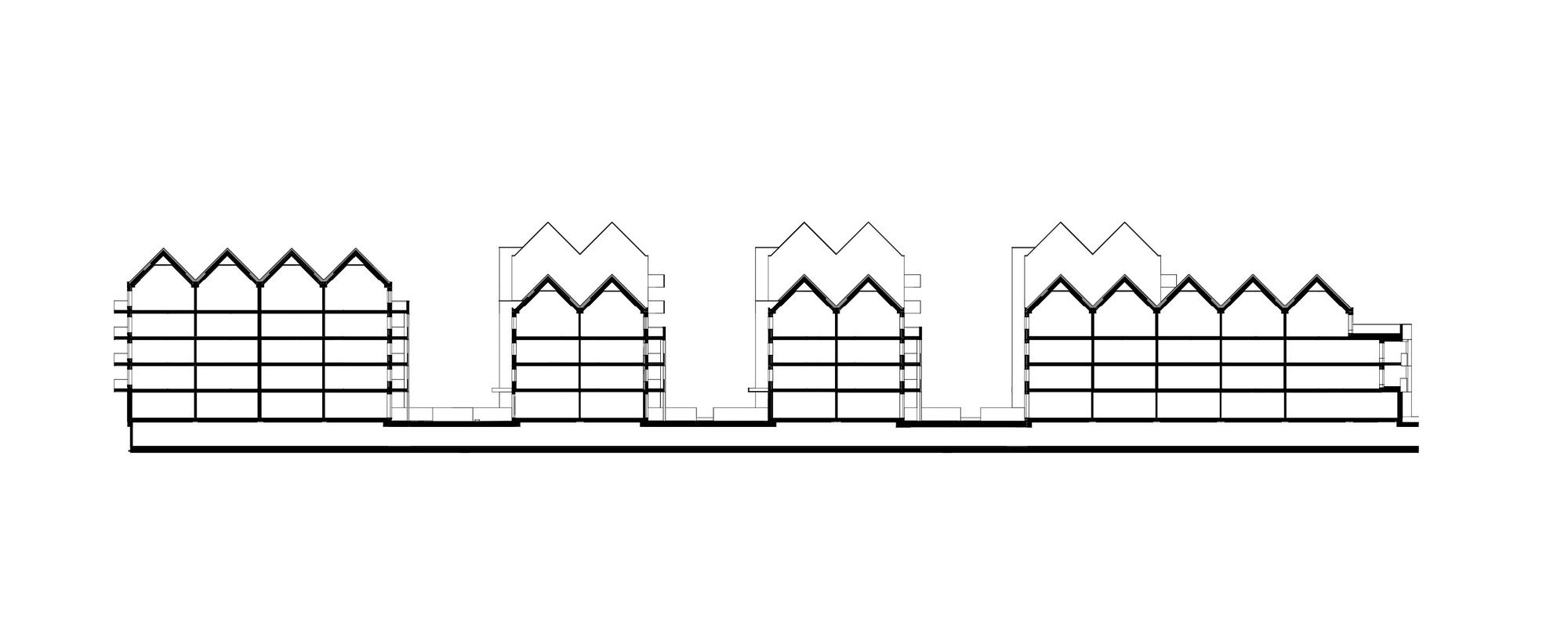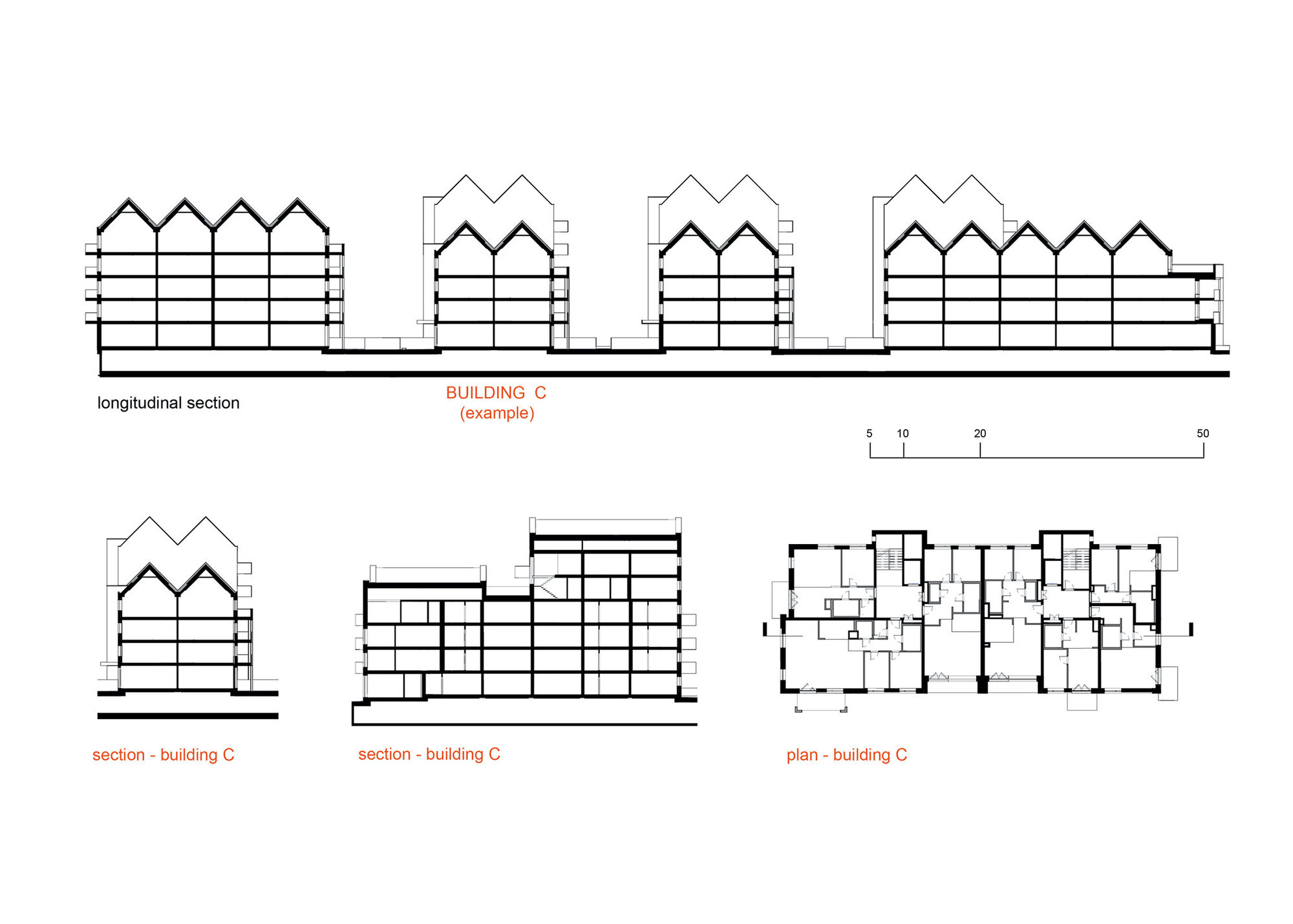The Riverview complex comprises seven buildings connected by an inner courtyard. Its urban layout features many openings facing the Main City and the Ołowianka river, making the structure light, flowing, and seamlessly fitting into the neighborhood. At the same time, when seen from the street’s perspective, the complex forms a compact frontage.

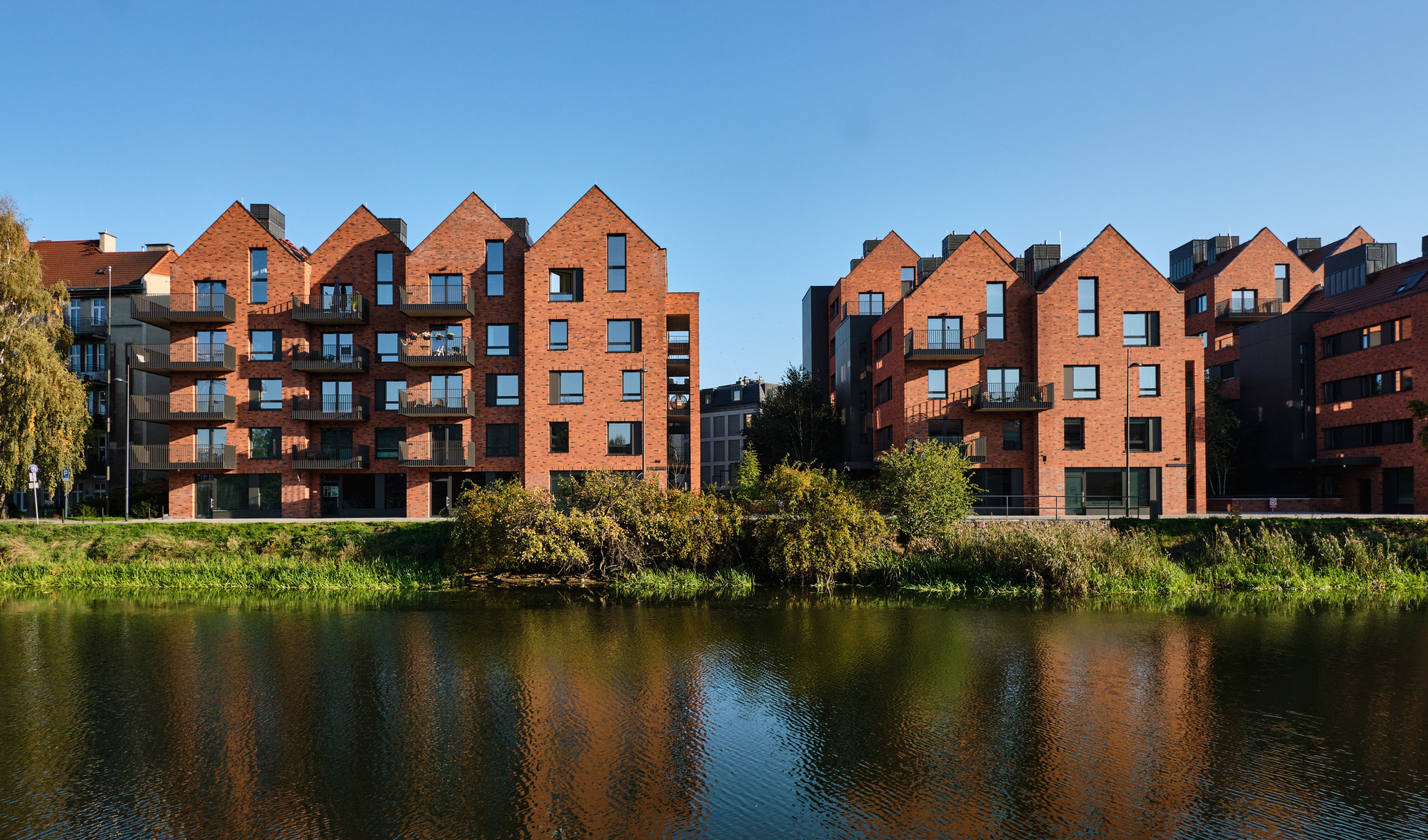
In the development, there are also offices, green areas, and retail units which makes work, services, and leisure all easily accessible to its residents. The Riverview complex offers easy access to the city center. A novelty on the housing market in Poland, all apartments in the complex are offered as ready-to-move units. It is also the first residential development in Poland that received LEED Gold certification.
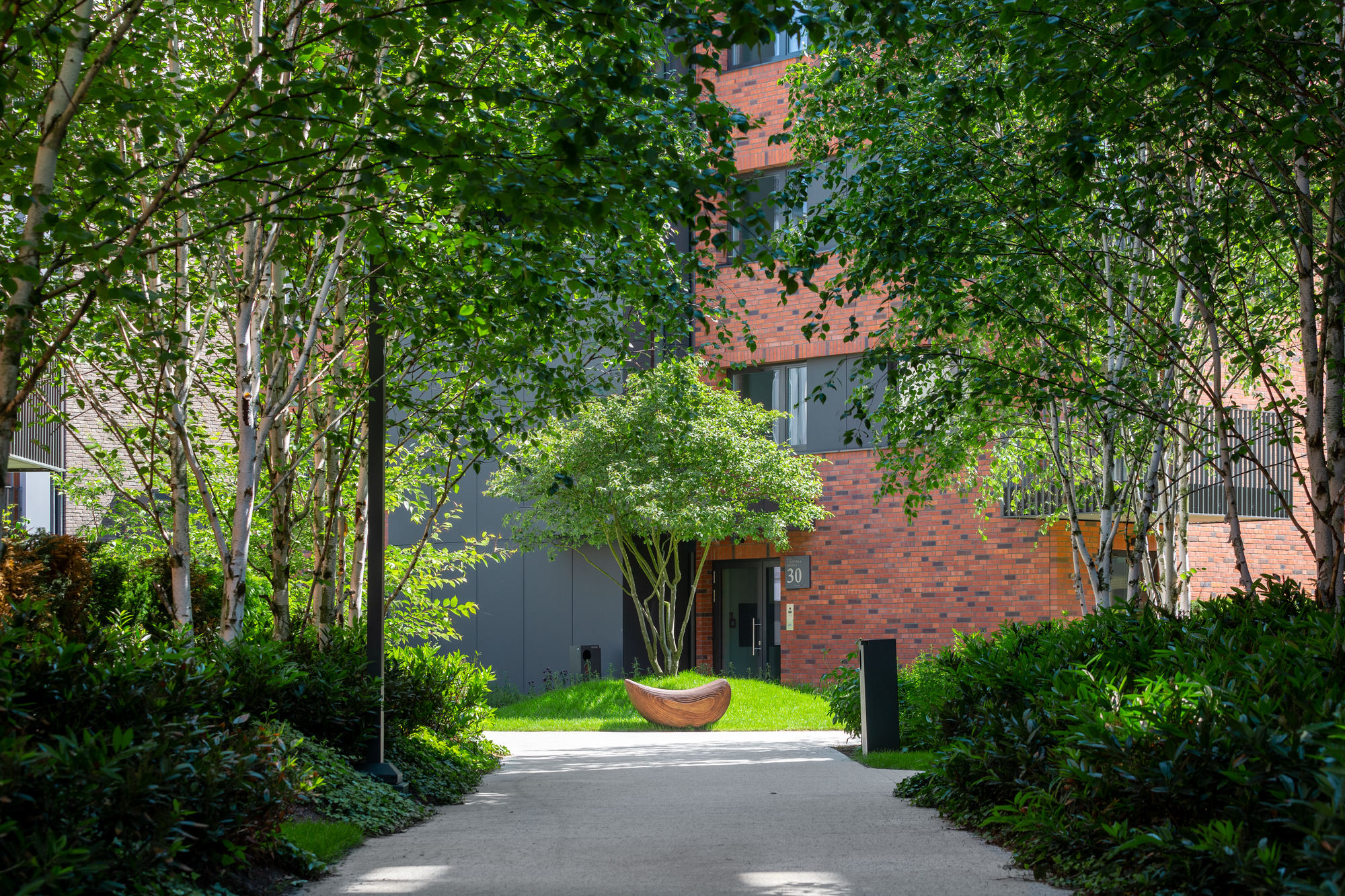
The development is located within a listed heritage area. Due to the unique location and planning recommendations, the character of the project alludes to surrounding historical buildings. Its designers have also analyzed how the form of the Riverview complex fits into the city skyline seen from various vantage points. The project was inspired by both the Hanseatic architecture and the eclectic burgher architecture with the aim of creating a modern and timeless development characterized by minimalistic details with a high-quality finish.
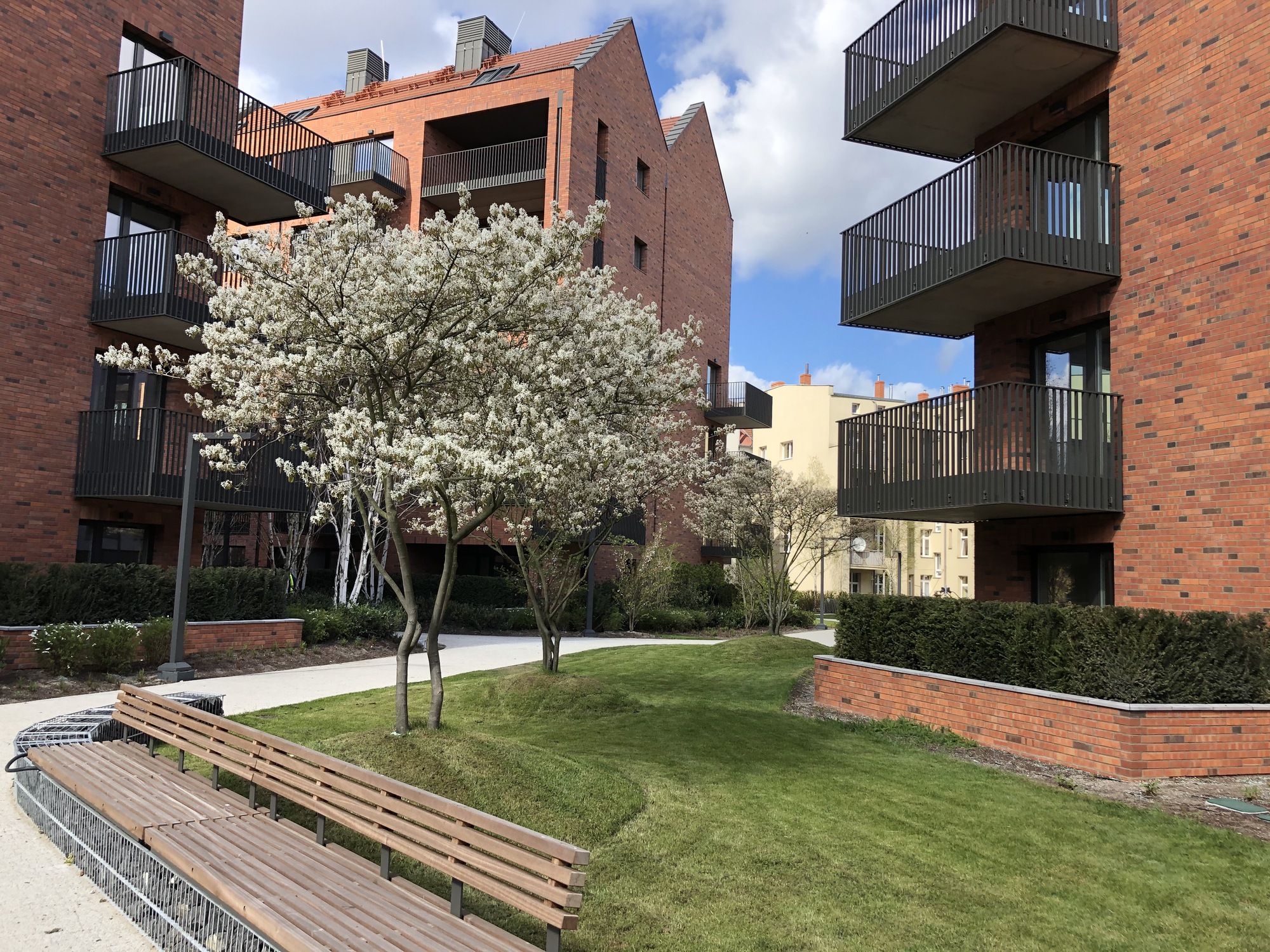
The aspect of locality was taken into account when choosing materials and reflected in cooperating with a Polish brickyard seated near Łódź in order to shorten the supply chain. Riverview’s shared space was created in collaboration with the students of the Academy of Fine Arts in Gdańsk. Young artists designed and produced the elements of small architecture. The shared green areas are full of luscious plants. Additional soil required for planting trees was heaped in soft hillocks that smoothly blend in with their surroundings. The panel over the underground car park was designed with the arrangement of the intended trees in mind.

View corridors from Na Stępce Street open to the river panorama. The inner courtyard was elevated above the street level to both enhance the riverside landscape experience and ensure privacy for the complex’s residents. To provide better light exposure of the apartments, the buildings’ large glass façades were divided into higher and lower parts thus enhancing the final effect. The buildings’ structure is based mainly on reinforced concrete frame structures with a particular focus on the building envelope which had to provide relevant anchorage and support the load of façade bricks.
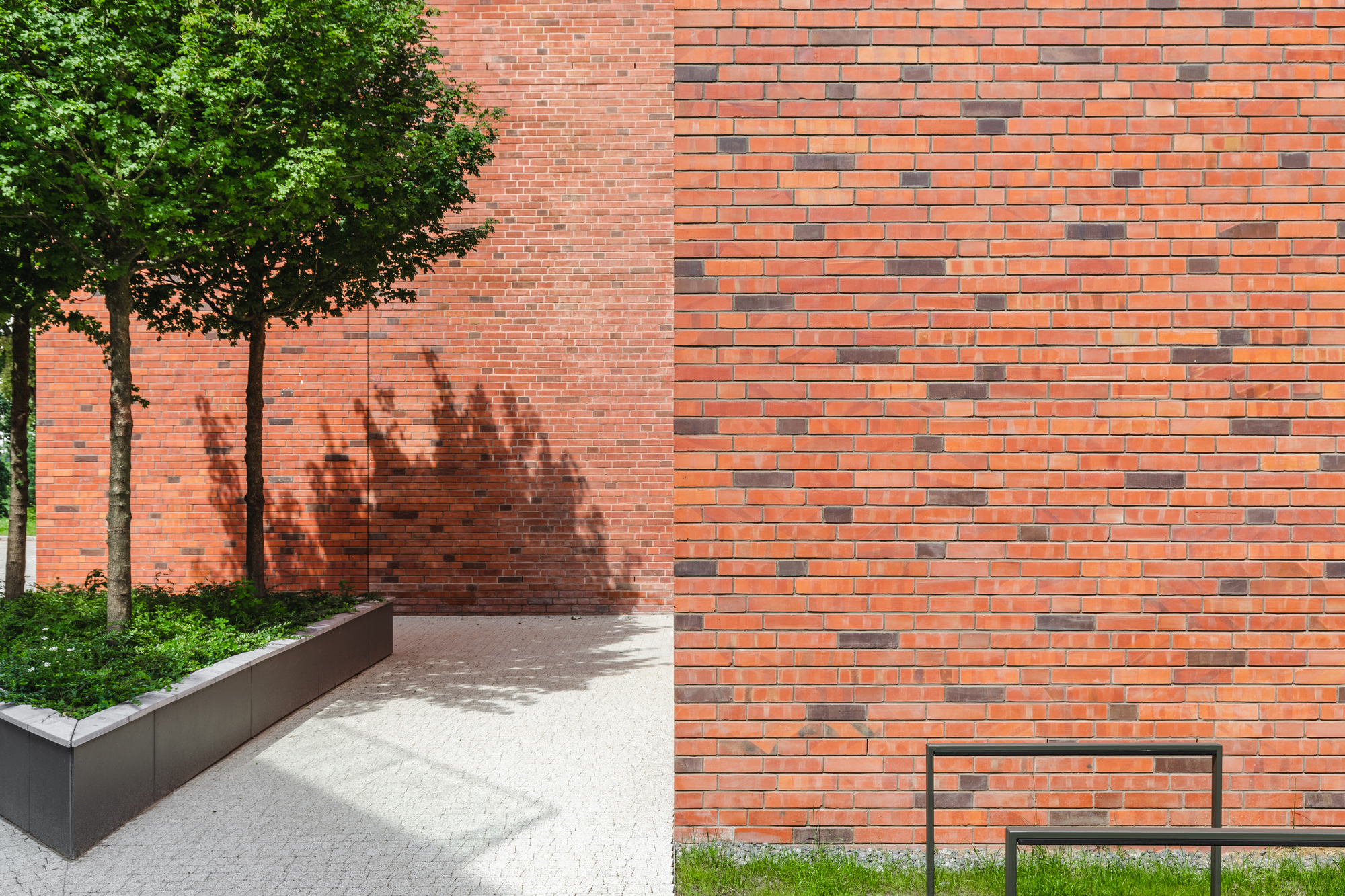
The complex has wooden rafter roofs. The buildings feature cavity walls and ventilated façades, while the majority of the complex has the exterior finish of bricks manufactured at a brickyard with a one-hundred-year-old history. The designers took a modern approach by using minimalistic details and ensuring high-quality workmanship. The roofs are covered with ceramic roof tiles with a minimalistic, simple, and flat form. The flashings are muted grey. Wood window frames and the high-quality wood covering of terraces and balconies were used throughout the project.
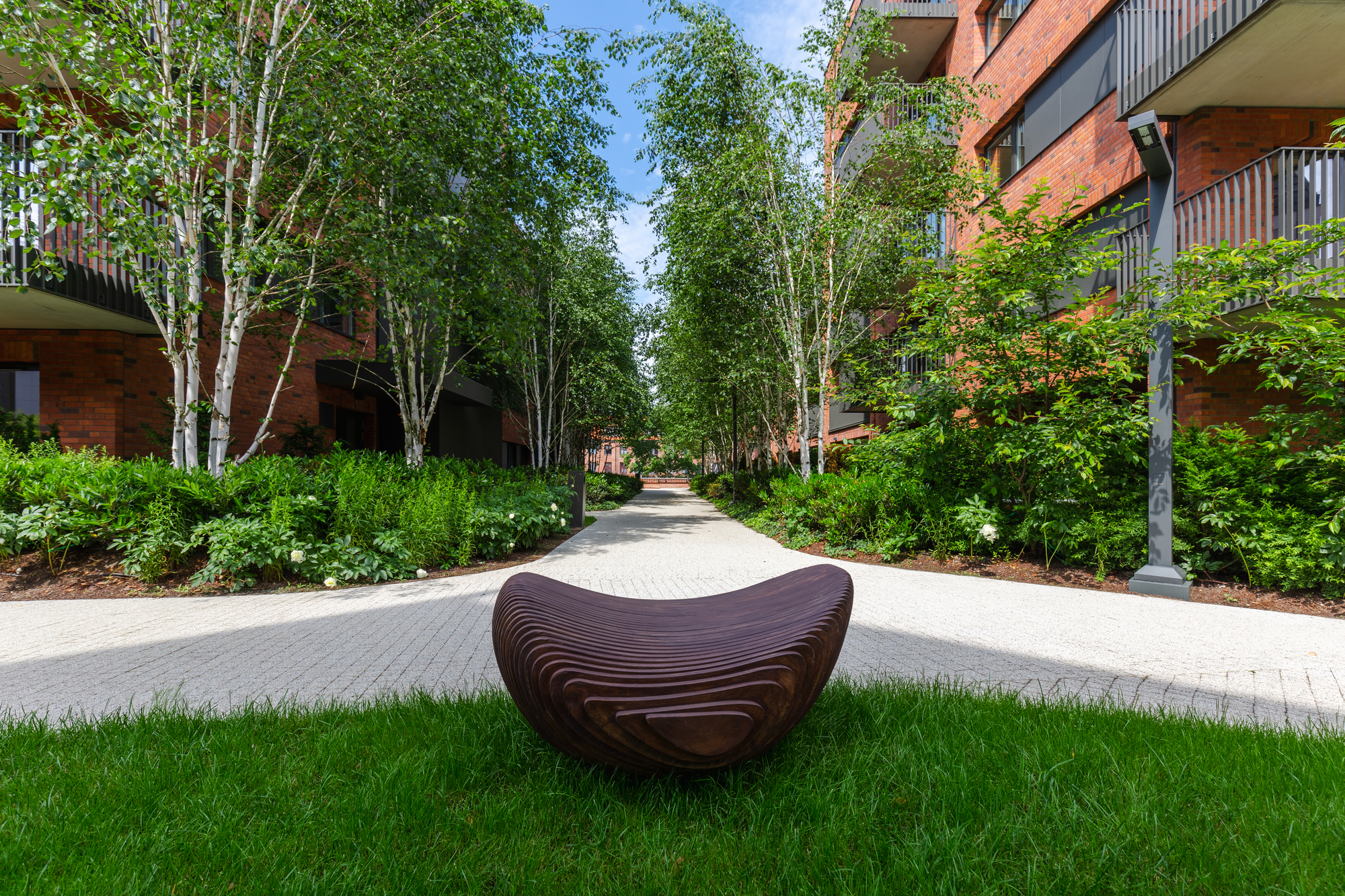
▼项目更多图片

